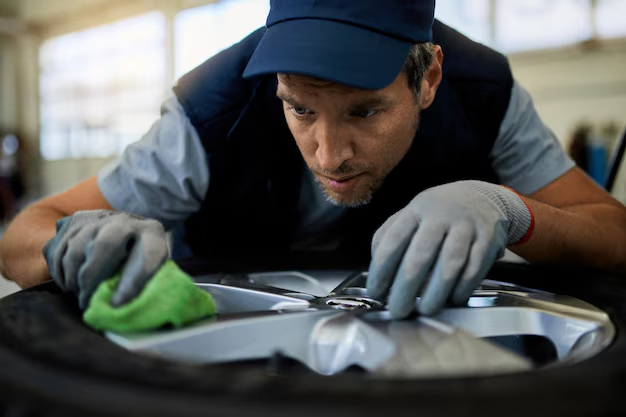Keeping Your Cool: A Step-by-Step Guide to Charging Your Refrigerator with Freon
Is your refrigerator not as frosty as it used to be? When your fridge struggles to keep its cool, it could be due to a low freon level. Freon is essential for the refrigeration process, helping to maintain that crisp, refreshing climate for your food and beverages. But how exactly do you recharge your refrigerator with freon? This guide will walk through the steps, tools, and best practices, so you can return to enjoying a perfectly chilled kitchen.
Understanding Freon and Refrigeration Systems
Freon, a brand name now commonly used to describe a variety of refrigerants, is crucial for your fridge's operation. It circulates through the refrigerator's coils, absorbing heat from inside the unit and releasing it outside. This process keeps the interior nice and cool, preserving your food.
Why Refrigerators Lose Freon
While refrigerators are designed to be a closed system, preventing freon from escaping, leaks can still occur due to:
- Aging seals or components: Over time, parts of the refrigeration system may wear down or become damaged.
- Physical damage: Moving your fridge can accidentally cause damage to its components.
- Manufacturing defects: Occasionally, certain parts may not be entirely sealed from the start.
Let’s break it down further.
Signs Your Fridge May Need a Freon Recharge
Not every chilly dilemma in your kitchen requires freon, but several signs can indicate a need for a recharge:
- Inadequate Cooling: If your fridge isn't maintaining the right temperature, your first check should always be with the freon levels.
- Compressor Runs Constantly: A fridge working overtime usually means it’s struggling with a lack of refrigerant.
- Frost Build-up: Oddly enough, frost can be a symptom of inadequate freon levels, signaling an imbalanced refrigeration cycle.
- Hissing or Bubbling Sounds: Unusual noises can suggest a leak in the system.
🔍 Quick Tip: Double-check the temperature settings and assess any temperature inconsistencies using an appliance thermometer before consulting the freon.
Required Tools and Safety Precautions
Before diving in, gather the necessary tools to perform the freon charge:
- Freon Kit: This includes the necessary refrigerant and connecting hoses.
- Wrench or Pliers: To open the service valve.
- Safety Glasses and Gloves: Protection from harsh chemicals.
- Leak Detector: Optional but useful to identify leaks after recharging.
Safety First
While recharging freon isn’t inherently dangerous, precaution is key:
- Ventilation: Perform the task in a well-ventilated space to avoid inhaling chemical fumes.
- Protective Gear: Always wear gloves and safety glasses to protect against spills or splashes.
- Professional Consultation: Consider seeking professional advice if you're unsure or uncomfortable.
Step-by-Step Guide to Recharging Freon
Once you’ve armed yourself with knowledge, safety equipment, and tools, you're ready to get started.
Step 1: Access the Refrigerator’s Freon Port
- Switch Off the Refrigerator: Disconnect from the power supply.
- Locate the Port: Consult your fridge's manual to find the access port, often found near the compressor.
Step 2: Attach the Freon Kit
- Connect the Hose: Firmly attach the hose from the freon kit to the freon port.
- Leak Check: Ensure connections are secure to prevent any leaks during the charging process.
Step 3: Recharge the System
- Open the Valve: Turn on the valve of the freon kit to start the flow of the refrigerant.
- Monitor the Gauge: Proper charges depend on the appropriate pressure levels, which can often be found in the fridge’s specifications.
Step 4: Check for Leaks
- Inspect Seals: Using a leak detector or a liquid soap solution, check all connections for leaks.
Maintenance and Care for Optimal Performance
Ensuring your refrigerator is always at its best requires continuous care:
- Regular Cleaning: Keep the coils clean and free from dust build-up.
- Monitor Seals: Frequently check door seals to ensure they’re intact and airtight.
- Professional Inspections: Periodic maintenance by a technician can prevent and detect issues early.
When to Call a Professional
Despite best efforts, some cases might still need professional intervention:
- Persistent Issues: Recurring cooling problems may indicate complex issues beyond basic freon recharging.
- Comprehensive Maintenance: Technicians can assess entire systems and identify potential non-visible defects.
Troubleshooting Common Problems
The process isn't always foolproof, and you might run into some common issues:
- System Doesn’t Cool Even After Recharge: This may suggest issues beyond refrigerant levels.
- Refrigerant Leaks Immediately After Recharge: A severe leak that needs expert attention.
Can I Use Alternatives to Freon?
With environmental regulations phasing out older refrigerants like freon, alternatives such as R-134a are becoming more common. These alternatives are generally used with newer models, and retrofitting older systems may require professional handling.
Summary Points
Here are some quick takeaways to keep your refrigerator running smoothly 🧊:
- Signs of Low Freon: Look for uneven cooling, excess frost, and constant compressor operation.
- Safety: Always prioritize safety with proper ventilation and protective gear.
- Professional Guidance: Don’t hesitate to reach out to a professional for complicated issues.
- Upgrade Options: Consider newer refrigerants that are environmentally friendly for future use.
Maintaining the efficiency of your refrigerator is about more than comfort; it’s about preserving your groceries, saving on energy bills, and ensuring long-term appliance health. With this guide, you are now well-equipped to tackle freon recharging safely and effectively. Keep cool!
